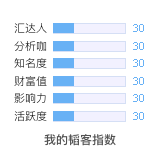[经济观察]市场情况
外汇市场回顾与即将举行的外汇新闻日历(04/30〜05/04)
不确定性再次主宰欧洲的头条新闻本周,随着最初的重点在美国市场远离风险QE3的减少前景的转变。然而,在市场上的盈利报告提供急需的积极的基调本周,帮助全球股票指数稳步增长,但前景依然黯淡的各种欧洲国家在政治上的阻力,以进一步苦行。
在法国,萨科齐击败社会党候选人和紧缩政策持怀疑态度的弗朗索瓦奥朗德在第一轮选举险胜。在荷兰,极右翼政党是执政联盟的一部分,拒绝签署更深入的削减预算和退出政府,削弱保守下午Rutte的位置。在德国,4月制造业PMI是非常薄弱,而欧元区之外的捷克共和国看到了巨大的反紧缩抗议,反对政府。在西班牙,失业率达到24.4%,去年在20世纪90年代初的水平,和S&P国家的主权信用评级下调两级至BBB +。
出现上周三的联邦公开市场委员会决定,以进一步降低QE3的机会后,美联储提高其国内生产总值和就业预测,同时保持对通胀的紧带更多的信息,请阅读我的详细发表联邦公开市场委员会分析。最初的美国每周失业索赔跳位再度走高,关于下一个(星期五)的非农就业数据的担忧1,所有重要的失业率剔了......在美国本周结束前进美国第一季度国内生产总值的阅读,错过了期望通过的可能性分析师谨慎的话0.3%,虽然在个人消费的积极惊喜缓解一些顾虑。
在英国,国内生产总值数据低于预期,英国投入技术性衰退(2009年以来首次)。英镑/美元在1.6170稍早触及的国内生产总值释放前6个月高点,但低于1.61手柄下跌比上一季度国内生产总值负动议,但市场对本周末看到一个巨大的逆转,打破了上述的1.6250水平事实上,分析家们看到近期的经济数据对国内生产总值之间的强烈分歧...焦点很可能将上月采购经理人指数是任何弱点提供了抛售的理由。
在澳大利亚,低于预期的通货膨胀暗示央行可能在5月的下次会议的行动。分析家们猜测有可能是在六月的削减,以及可。 1.6%的年通胀的一年是2009年第三季度以来的最低水平,修剪手段通胀也是在5个季度的最低水平0.3%,Q / Q ......随着央行会议定于5月1日,贸易商有可能抛售上即将降息的猜测......当然,关键将是利率决定后,温和的语调可能会增加更多的抛售压力,伴随着央行的报表。
在日本,央行净5万亿日元(低于预期)增加其资产购买计划,并公布其半年度经济预测,提出未来两年的国内生产总值和消费物价指数的前景。 FY12/13国内生产总值上升2.3%的增长预测从2.0%前和FY13/14本地生产总值的增长预测从1.7%上升1.6%前。对通胀,央行提出FY12/13消费物价指数的预测从0.1%到0.3%前FY13/14消费物价指数的预测上升0.7%,0.5%前,日央行维持其宽松货币政策了坚实的基调,这很可能货币在中长期添加更多的悲观情绪。
总之,欧元很可能保持中立作为市场等待更多出欧洲的消息,但考虑到本周结束略有增益,已同意合并货币,最消极的情绪已经价格。英镑可能是驱动的采购经理人指数本周交易商抛售英镑的负面新闻的第一个迹象等待。澳元和新西兰元是拉力赛的目标销售为两个央行密切监测货币力量;澳元兑美元可能会纠正急剧由于央行即将到来的会议,如果央行是温和或信号额外的宽松政策,希望看到澳元兑美元下跌至1.0000最起码的水平。瑞士法郎很可能保持不变,新SNB董事长约旦试图说服市场对瑞士央行的决心(好运气),但不能排除干预。美元将按照上周五的非农就业数据的结果,市场推测联邦公开市场委员会的下一步行动。 CAD是有可能在未来可能加息的强烈留在炒作......事实上,超过了所有的主要央行,中行是最有可能升息。日元很可能逐渐减弱后,在最初的失望比预期的宽松......让我们面对它,没有人去购买日元,如果市场保持强劲的日央行承诺在未来更宽松。
原文:
Forex Market Review & Upcoming Forex News Calendar (04/30 ~ 05/04)
Uncertainty once again dominated European headlines this week along with an initial focus shift in the U.S. market away from risk as the prospects for QE3 diminished. However, earnings reports provided much needed positive tone in markets this week, helped global equity indices make steady gains, although outlook remains bleak for various European nations on the political resistance to further austerities.
In France, Socialist candidate and austerity skeptic Franois Hollande beat Nicolas Sarkozy by a narrow margin in the first round of election. In the Netherlands, a far-right party that was part of the governing coalition refused to sign off on deeper budget cuts and withdrew from the government, undercutting the position of conservative PM Rutte. In Germany, the April manufacturing PMI was very weak, while outside the euro zone the Czech Republic saw huge anti-austerity protests against the government. In Spain, unemployment hit 24.4%, levels last seen in the early 1990s, and S&P cut the nation’s sovereign ratings by two notches to BBB+.
The FOMC decision on Wednesday appeared to further reduce the chances of QE3 after the Fed increased its GDP and employment forecasts while maintaining a tight band on inflation, for more information, please read my detailed Post FOMC Analysis. Initial US weekly jobless claims jumped a bit higher again, generating cautious words from analysts worried about next Friday’s payrolls data with the possibility of a tick up in the all important Unemployment Rate… The U.S. week ended with Advance US Q1 GDP reading that missed expectations by 0.3%, although the positive surprise in personal consumption eased some concerns.
In UK, GDP data was below expectations and put the UK into a technical recession (first since 2009). The GBP/USD earlier hit six-month highs at 1.6170 prior to the GDP release but slumped below the 1.61 handle as the QoQ GDP moved into negative territory; however market saw a huge reversal towards the end of the week and broke above the 1.6250 level on the fact that analysts are seeing strong divergence between recent economic data versus GDP… Focus are likely going to be on the May PMIs as any weakness should provide reasons for sell-off.
In Australia, lower than expected inflation signaled possible central bank action at the next meeting in May. Analysts are speculating that there could be a cut in June as well as May. Year on year inflation of 1.6% was the lowest level since Q3 2009, with trimmed means inflation also at the lowest level in 5 quarters at 0.3% q/q… With RBA Meeting scheduled on May 1, traders are likely to sell-off on speculations of an imminent rate cut… Of course, the key will be on the accompanied statements by RBA after the rate decision as dovish tone may add more pressure to the sell-off.
In Japan, BOJ increased its asset buying scheme by net 5 Trillion Yen (less than expected) and released its semi-annual economic forecasts which raised its GDP and CPI outlooks for the next two years. FY12/13 GDP growth forecast to +2.3% from +2.0% prior and FY13/14 GDP growth forecast to +1.7% from +1.6% prior. On inflation, BOJ raised FY12/13 CPI forecast to +0.3% from +0.1% prior and FY13/14 CPI forecast to +0.7% from +0.5% prior… BOJ is maintaining a solid tone in its easing policy, which are likely to add more bearish sentiment to the currency in the medium to long term.
In conclusion, EUR is likely to remain neutral as the market waits for more news out of Europe… although considering the slight gain into the end of the week, one has to agree that most negative sentiments for the combined currency have been priced in already. GBP is likely to be driven by the PMIs this week as traders await for the first sign of negative news to dump Sterling. AUD and NZD are targets of SELL on Rally as both central banks are monitoring currency strength closely; AUDUSD could correct sharply due to the upcoming RBA meeting, and if RBA were to be dovish or signal additional easing, expect to see AUDUSD drop to the 1.0000 level for the very least. CHF is likely to remain unchanged as new SNB chairman Jordan tries to convince the market of SNB’s resolve (good luck with that), but one cannot rule out intervention. USD will follow the results of NFP on Friday as the market speculates FOMC’s next move. CAD is likely to remain strong on speculation for possible rate hike in the future… as a matter of fact, out of all the major central banks, BOC is most likely to hike rates next. JPY is likely to weaken gradually after the initial disappointment in the less than expected easing… let’s face it, no one is going to BUY JPY if the market were to remain robust with BOJ promising more easing in the future.











